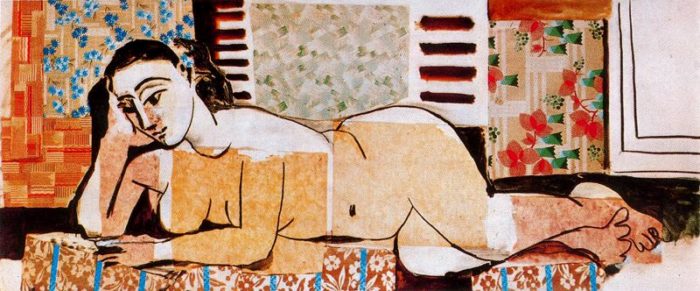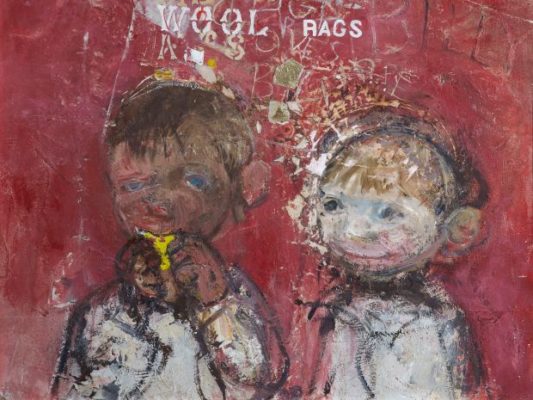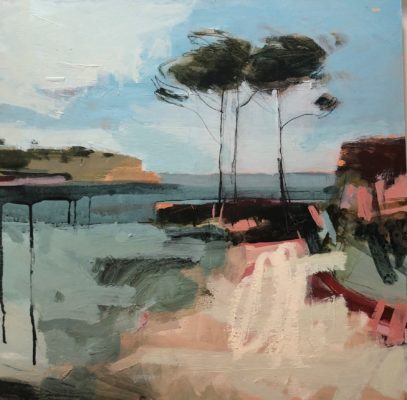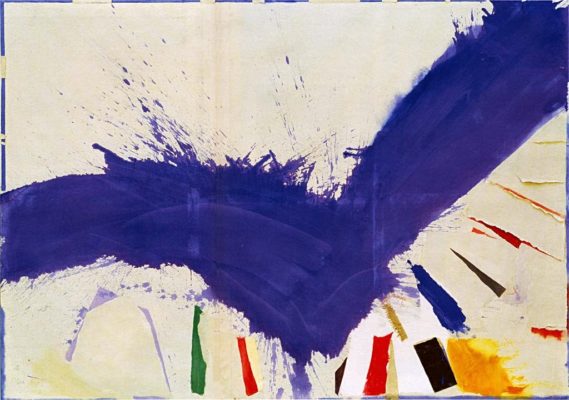Course details
How do you create landscape paintings that are strikingly different? Investigate the Cornish coast through the lens of great British Modernists Barbara Hepworth, Henry Moore and Naum Gabo and find out.

Sketching outside, artist tutor Ilker Cinarel offers his professional insight into the procedures and perspectives that produced iconic modernist shapes, such as Barabara Hepworth’s fondness of the birds-eye-view from the top of the hill in St Ives. Through a series of exercise that cross the boundaries between 2D and 3D, become fluent in both the fluid and solid elements of landscape, altering your perspective on the architecture of place. This understanding brings movement and dynamism to your sketches, incorporating lines, curves and planes that are suggestive rather than static.
Ilker also provokes emotional responses to the landscape, giving you evocative and poetic phrases to think about as you work. This brings abstraction to your drawing and painting, investing the shapes with emotive presence. Back in the studio, use inks and acrylics to develop your paintings and integrate more formal considerations such as composition, balance and scale. These frames, structures and stimuli give you something to react to throughout the course as you develop your sense of what feels authentic to you. Build sculptural paintings that evoke the rugged coastal forms of the Cornish landscape and the British Modernist tradition that has grown up around it.
Day to day plan
This is a rough indication of what to expect over the course. However sometimes the structure of the days may alter depending on the nature of the group and weather.
Day 1
Introduction to the British Modernists and how they have interacted with the St Ives coastline. Then head out into the landscape and explore the shapes and lines of the coast, with technical advice on how to get the most out of your drawing. Ilker will lead you through a series of exercises and offer prompts to shift your viewpoint. This includes building a simple sculptural form to use as inspiration for a painting.
Day 2 & 3
The next day in the studio develop work using inks and acrylics. Continue to process your work from the previous day, incorporating formal considerations such as balance, composition and scale. Develop the identity of your painting, drawing on artistic, technical and emotive inspirations.
What will I learn?
• A deeper understanding of British Modernism and how it relates to the Cornish landscape.
• Insight into exercises and prompts you can use when collecting visual information to produce abstract and expressive elements.
• Technical advice on processes to evolve sketches into more consolidated paintings that consider balance, scale and composition.
• The opportunity to ‘try on’ different emotional and artistic influences in your painting to see what feels authentic to you.
• Insight into the structures and decisions that make a painting and how these can be drawn on but also rejected and subverted to create a reactive and dynamic piece of art.
Who would this course suit?
Whether you’re a total newcomer or paint regularly, this course is perfect for integrating abstract, suggestive elements into your painting. If you’d like to explore the triumph of British Modernism’s ability to communicate the rhythms and flows of natural forms through precise lines and geometric curves in greater detail, this is an ideal opportunity.
Taught by
What to Bring
Our studios are fully equipped and we provide you with all the materials you need for your course. However, if you have a favourite set of brushes or any specialist materials that you would prefer to use, please bring them with you.
Timings and Breaks
The first day starts at 10am and finishes at 4.30pm, please aim to arrive ten to fifteen minutes before the start time.
All course days after that start at 9.30am and finish at 4pm and there will be an hour for lunch. There are plenty of nearby places to eat and we will serve tea and coffee at break times during the day.
FAQs
Studio Courses
How can I get help in choosing a course?
Our friendly expert staff are always happy to discuss your needs and our courses in more detail to help you with your decision. Please call us on 01736 797180
How do I get my work home?
Tutors have special techniques for transporting oil paintings and the school has plastic folders available in our shop for £3.50 or do bring a portfolio.
For international students we are happy to arrange transportation of your work back home.
What do I need to bring?
Absolutely nothing! All materials and aprons are provided although some people do like to bring their own set of brushes.
What do I do for lunch?
Courses allow an hour’s break for lunch and there are numerous places nearby or you are welcome to bring a packed lunch into the studio.
What times do courses run?
Most of our courses start at 10am and end at 4.30pm on the first day. Subsequent days we start at 9.30am ending at 4pm.
Weekend Courses run 10am – 4pm on the first day but the final day starts at 9.30 and ends at 3.30 with a short lunch break to enable people to get home that evening.
Do you have to be experienced to come to the School?
The School is a very friendly and welcoming place for all ages and experience. Our drop-in life classes and August half-day workshops are ideal for those wanting to have a go for the first time. Most of our longer courses are also fine for novices.
If any of the courses do need a bit of experience we flag this up in the brochure and on the website.
Booking a Course
How can I reserve a place?
We will hold a provisional reservation for 24 hours if you give us a call whilst you find accommodation. Otherwise please book online or by telephone 01736 797180.
You can reserve a place with a £100 deposit; balance is due 12 weeks before course start date.
About St Ives
Where do I park?
The nearest long stay public car parks are the Island and Barnoon Long Stay Car Park, both a 5 minute walk away. In the peak summer months it may be easier to park at Trenwith Car Park by the leisure centre and walk down into town. If you don’t fancy the walk up the hill at the end of the day there is a shuttle bus which runs from outside the cinema.
How do I get there?
Public Transport: If you are coming from further afield the main train line runs into St Erth which is a 15 min taxi ride away or you can take the St Ives Bay Line which runs approx. every 30 minutes. The School is a 10 minute walk from St Ives station.
Driving: M5 will take you to Exeter where we recommend that you take the A30 across Bodmin Moor and into Cornwall. After passing Hayle, leave the A30 at St Erth roundabout for St Ives. Turn right at the second roundabout. This road will take you through Lelant and Carbis Bay into St Ives.
Where can I stay?
St Ives has a huge selection of hotels, guest houses and self catering accommodation to choose from. Please browse the art holidays St Ives section on our website and give us a call if you would like any help.








